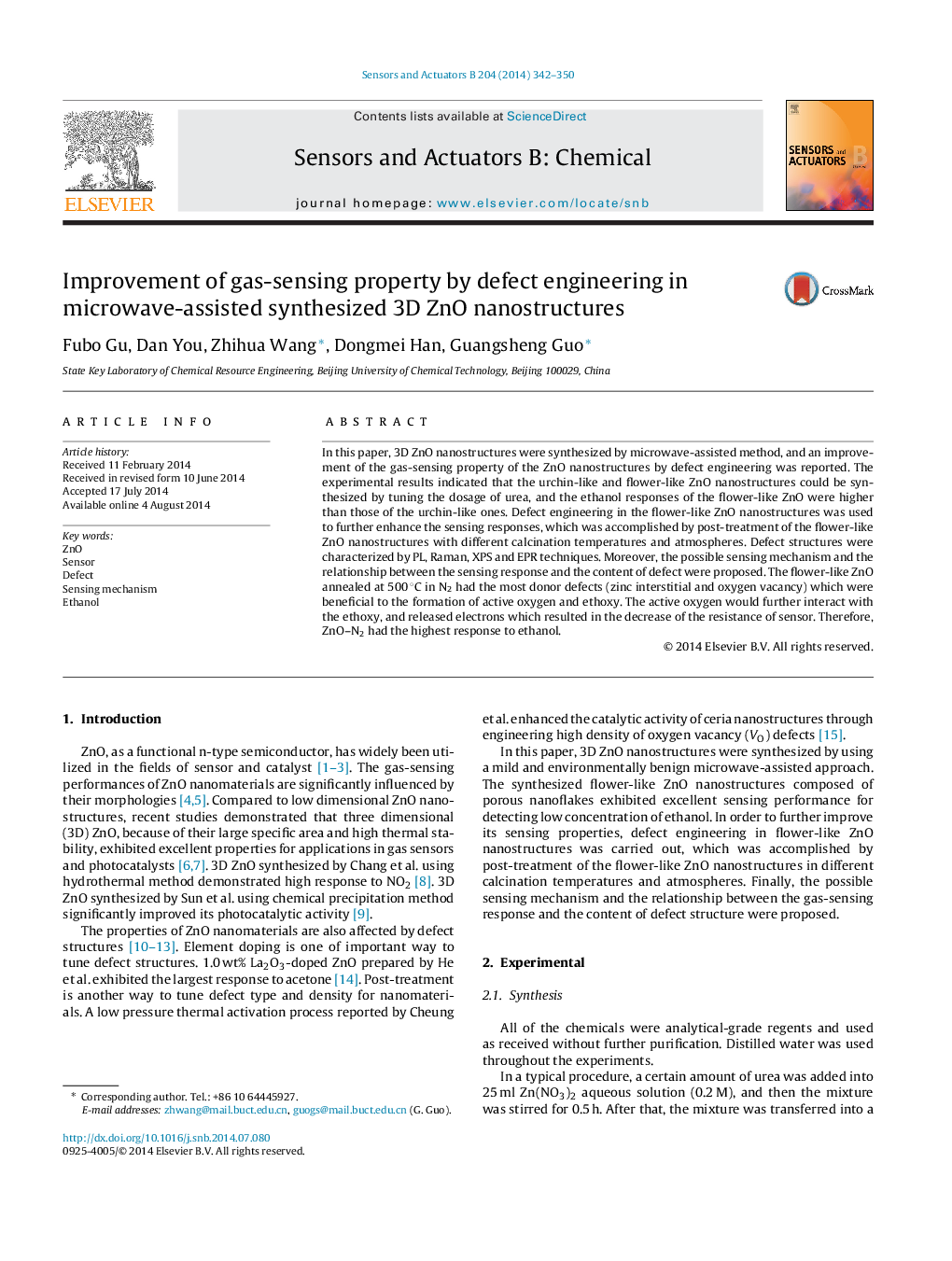| Article ID | Journal | Published Year | Pages | File Type |
|---|---|---|---|---|
| 741987 | Sensors and Actuators B: Chemical | 2014 | 9 Pages |
In this paper, 3D ZnO nanostructures were synthesized by microwave-assisted method, and an improvement of the gas-sensing property of the ZnO nanostructures by defect engineering was reported. The experimental results indicated that the urchin-like and flower-like ZnO nanostructures could be synthesized by tuning the dosage of urea, and the ethanol responses of the flower-like ZnO were higher than those of the urchin-like ones. Defect engineering in the flower-like ZnO nanostructures was used to further enhance the sensing responses, which was accomplished by post-treatment of the flower-like ZnO nanostructures with different calcination temperatures and atmospheres. Defect structures were characterized by PL, Raman, XPS and EPR techniques. Moreover, the possible sensing mechanism and the relationship between the sensing response and the content of defect were proposed. The flower-like ZnO annealed at 500 °C in N2 had the most donor defects (zinc interstitial and oxygen vacancy) which were beneficial to the formation of active oxygen and ethoxy. The active oxygen would further interact with the ethoxy, and released electrons which resulted in the decrease of the resistance of sensor. Therefore, ZnO–N2 had the highest response to ethanol.
